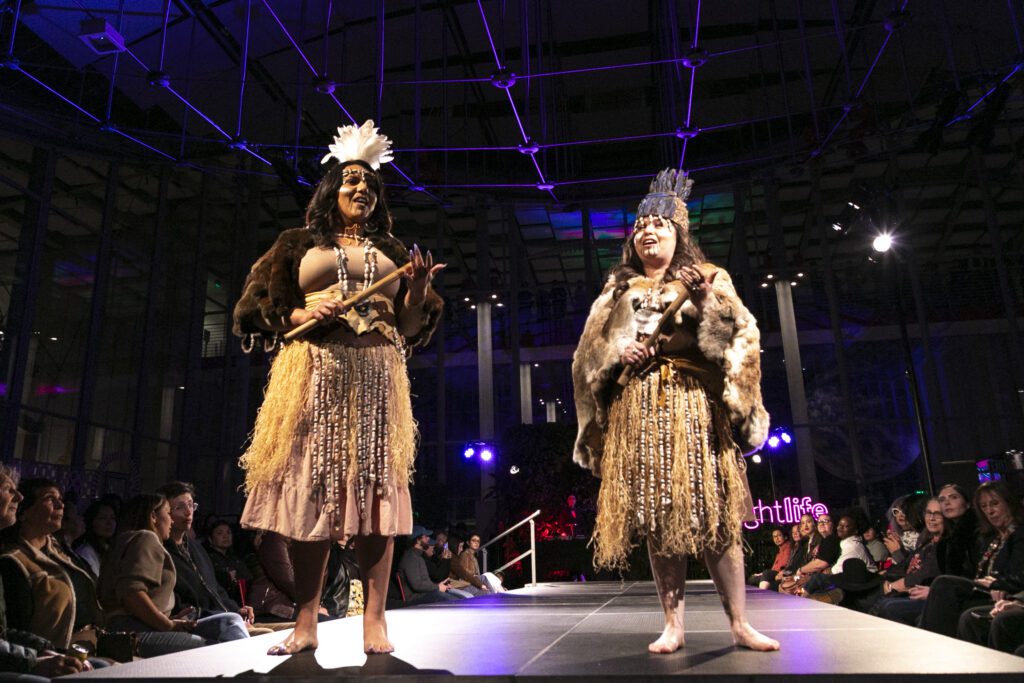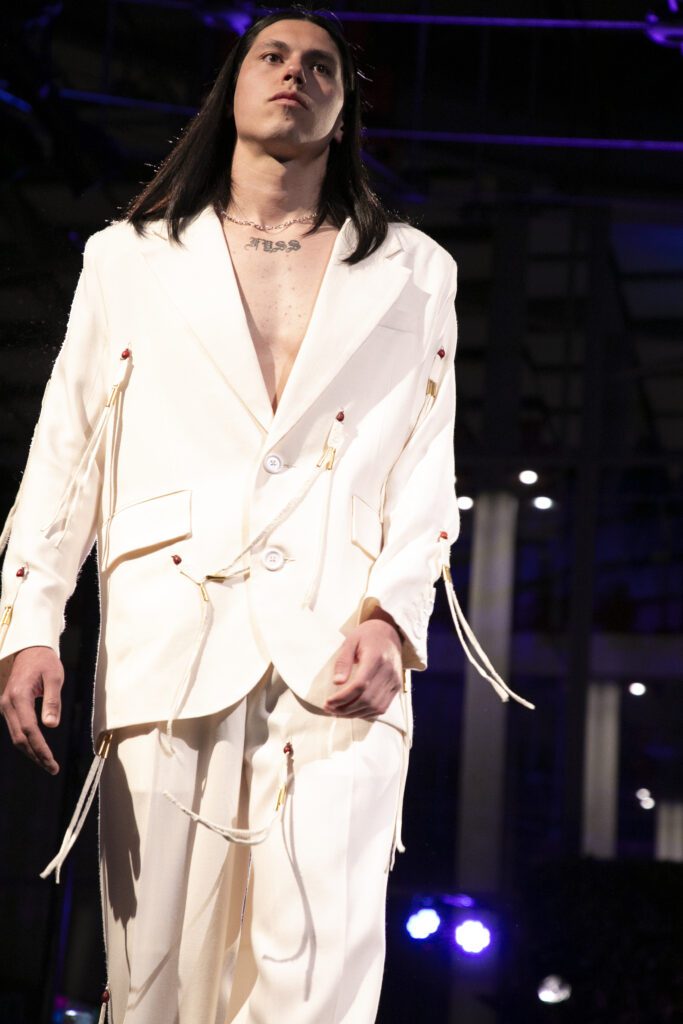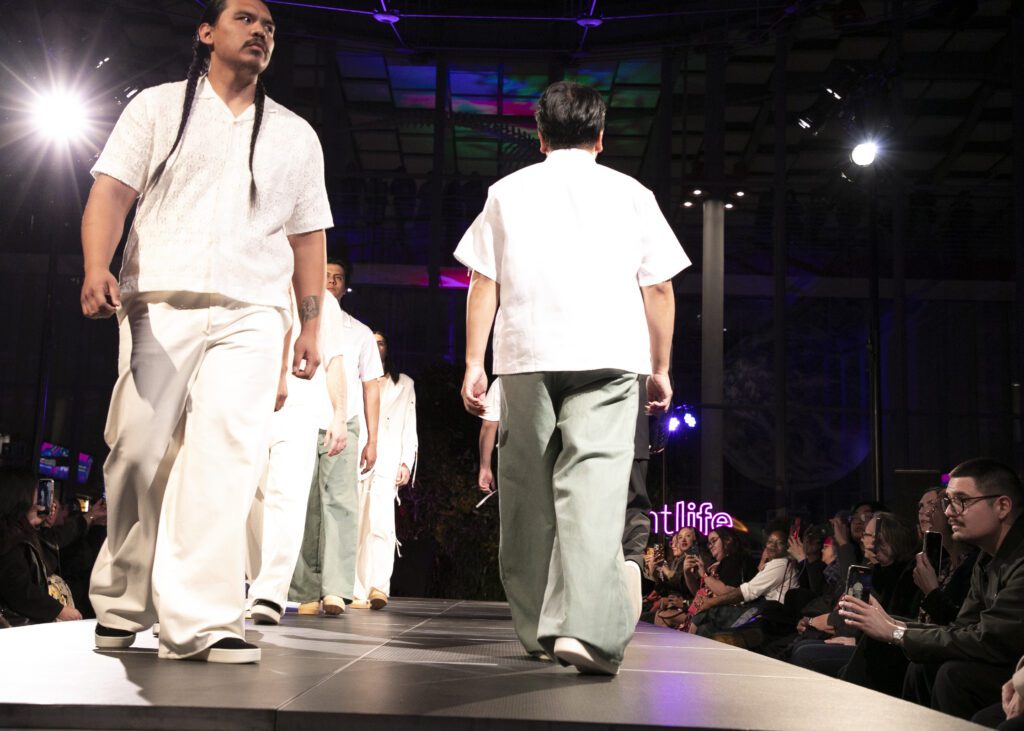How fashion reflects stories of the land.

To be indigenous is to recognize that you are part of the land, and just like our own bodies, we need to protect and take care of the well-being of the land as well. Native fashion continues to share the stories of the land and to remind us all that without the land we would not be able to survive. Fashion has a unique ability to be intimate with people by default, simply because they are the closest things we put to our skin. They are shaped like our bodies. Embodying the stories of the land and encapsulating the ongoing stories native people have and share. Urban Native Era is one of these brands. They aim to empower people who wear their designs and to “increase indigenous visibility all around the world”.
Witnessing Joey Montoya, who is the creator of Urban Native Era, at the California Academy of Sciences fashion show that showcased three designers, Alira Sharrief of The Hijabi Chronicles, Cindy Phan of Ao Dai Festival, and Joey, was a delightful experience. UNE gave us something we hadn’t seen before in previous streetwear collections released by the brand. With their famous “you are on native land” printed on dad hats and hoodies. These designs had a contemporary touch with elegant, earthy, neutral tones and modestly fierce garments. While tuning in to the Intersections Conversation panel discussion earlier in the evening hosted by Marisol Medina-Cadena, Joey mentioned that the designs he showcased touch on a lot of connecting us to our culture and place.
You can see the etheric elements embedded into the designs of the collection. The sheer blouse felt like a fabric of ghostly allure but also ready to wear out to a nightclub or day party. Really bringing two worlds together, enabling a kaleidoscope of diverse features. I really loved Joey’s take on what clothing meant to him. He mentioned that “Clothes can hold us. There’s a spiritual-ness to it. There’s something there, it’s life. When you put something on, you feel that”. Realizing that clothes can be spiritual is a great way to dress with intention and think about how our personal stories are expressed through the clothes that we choose to put on.
Urban Native Era started in 2012 right here in San Jose, California. Joey Montoya, who is Lipan Apache, born and raised in San Francisco, wanted to spread the visibility of indigenous peoples. Inspired by the Idle No More Indigenous movement, UNE began to release its first collection in May 2013, which was made up of a series of shirts. Joey is a multimedia artist and entrepreneur who has set out to re-design a new world. One that is more inclusive. Since then, he has expanded his company, UNE, into a global phenomenon where his designs have been worn by Pauline Alexis “Wagiya Cizhan” (Young Eagle), (Alexis Nakota Sioux), who plays Willie Jack in Hulu’s original series Reservation Dogs. Joey has been featured on ABC’s Localish series Unfiltered and has been in magazines like Cosmopolitan and Vogue. Joey is deeply rooted in the Bay Area Native communities and always has a booth at local Pow Wows.
Urban Native Era is a brand for everyone to wear. Non-natives can and should wear the famous “You are on Native Land” attire to contribute to spreading awareness about who’s land you walk on, use the resources on, and understand that everything we do, and everywhere you go, you are on Native Land that has provided for us since time immemorial. We all need to recognize the indigenous names of the land we live and walk on. To pay attention to the stories that the land has and the voices of the people of the land translating these sacred stories. We must protect the land, heal the land, and love the land as the land loves us. Recognizing native land is promoting the indigenous perspective, leading down a path that takes us out of the colonial mindset of exploiting the land, and into the indigenous mindset of nurturing the land.
Read my next post, where I sat down with one of Native Fashion’s iconic creators, Collin Tru Hale, Mideegaadi Maa?iagash “Buffalo Looking” (Hidatsa/Mandan/Navajo), to discuss his perspective on the Native Fashion world.



